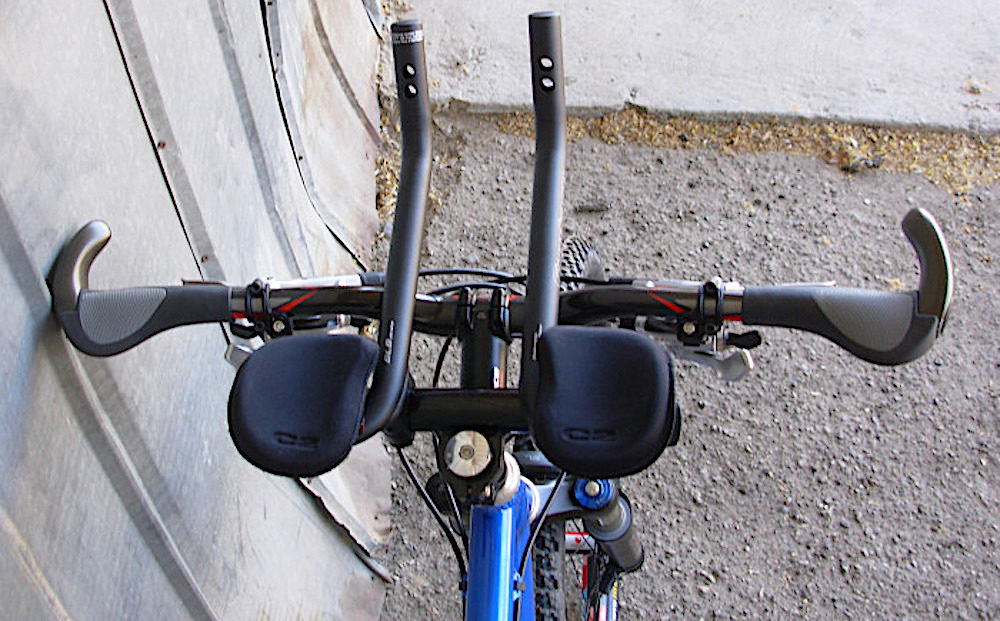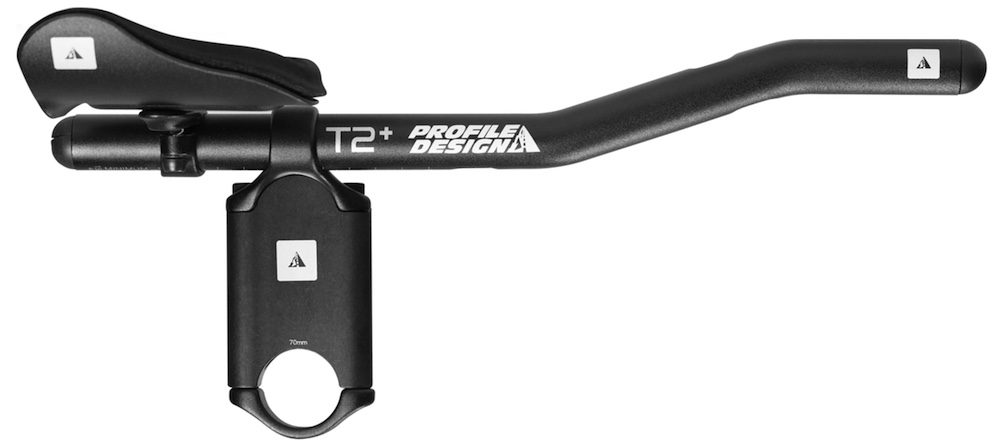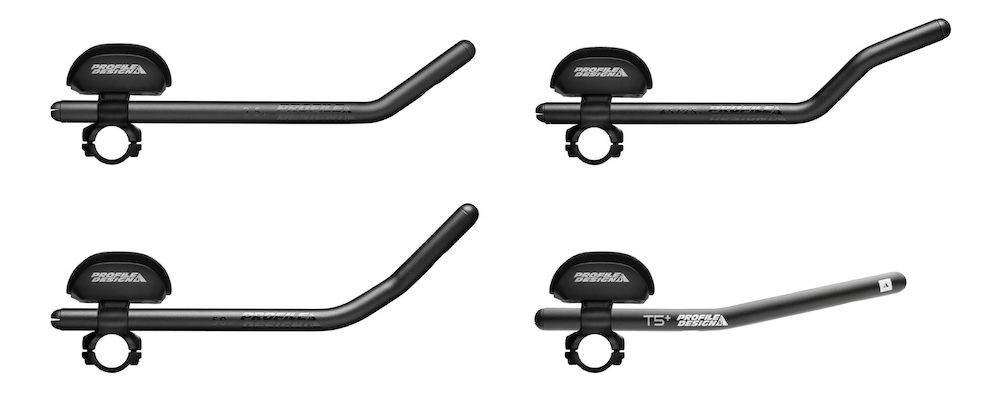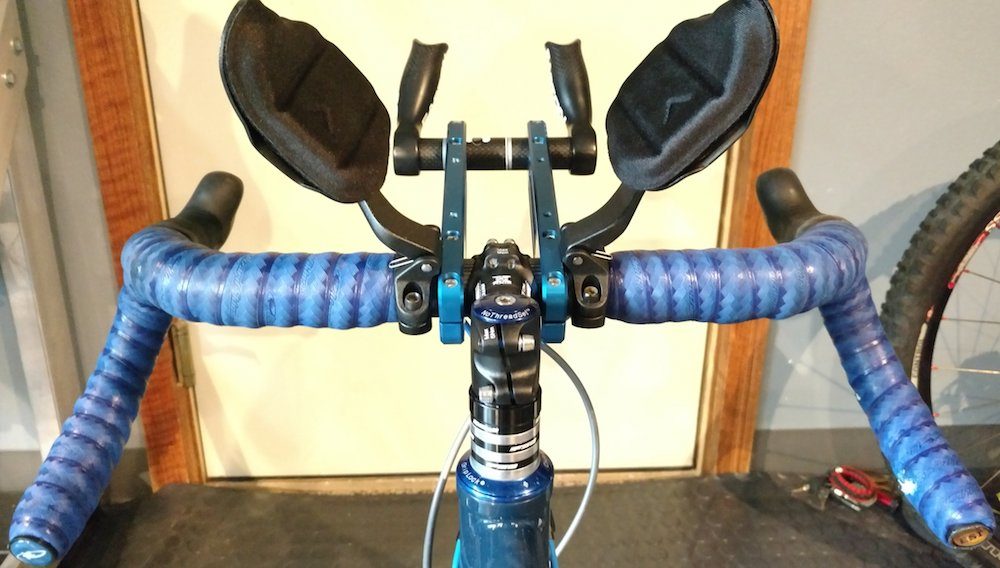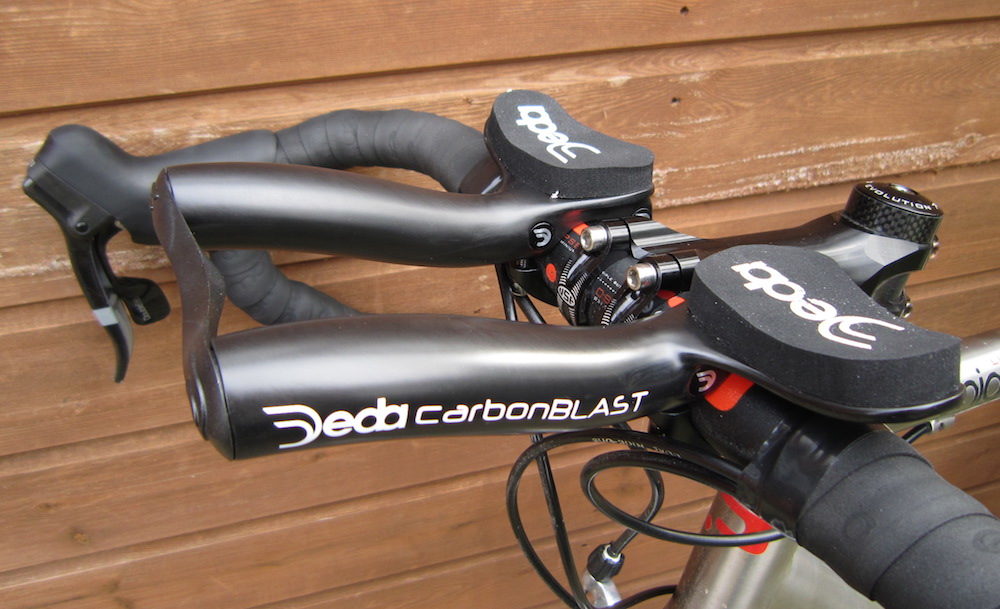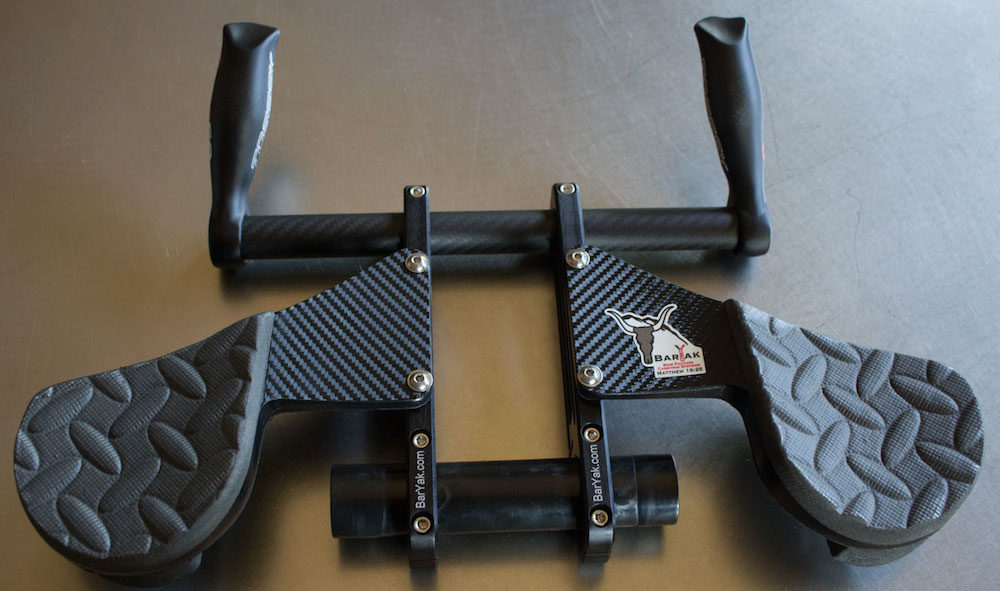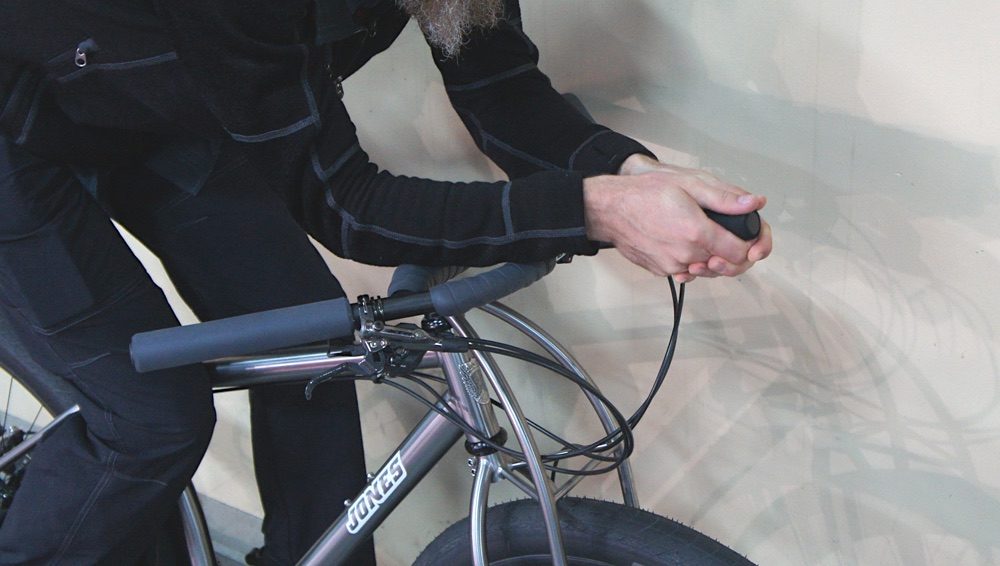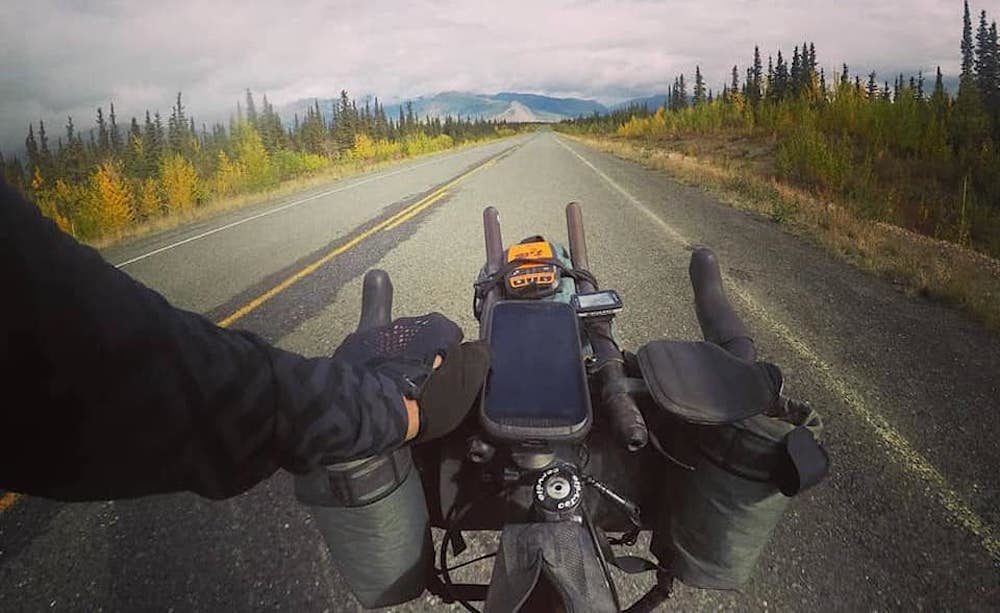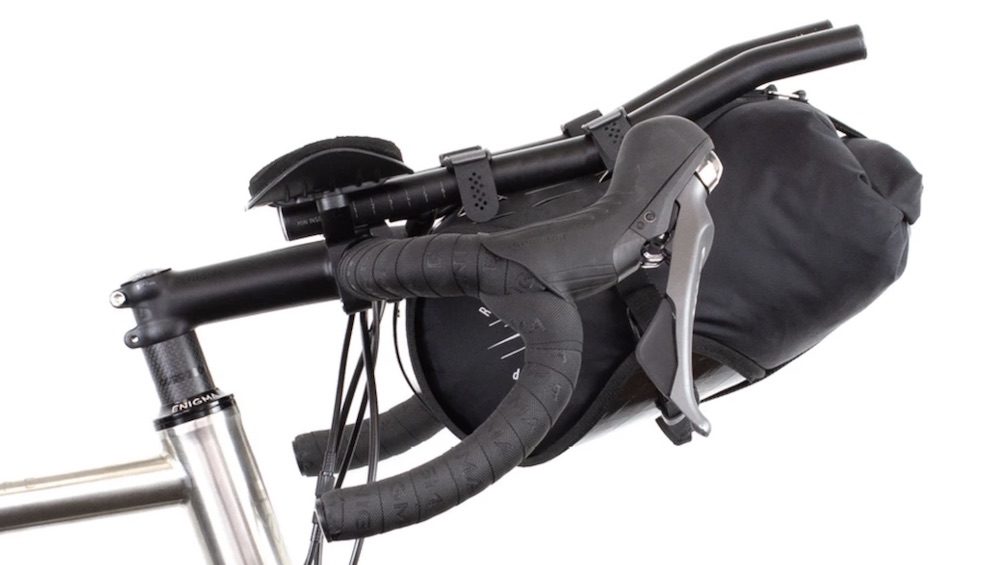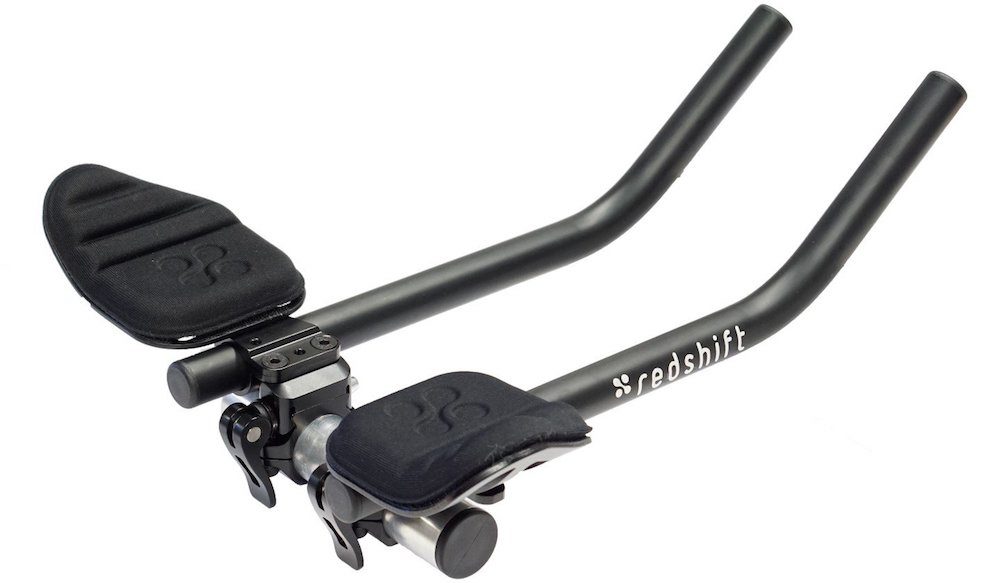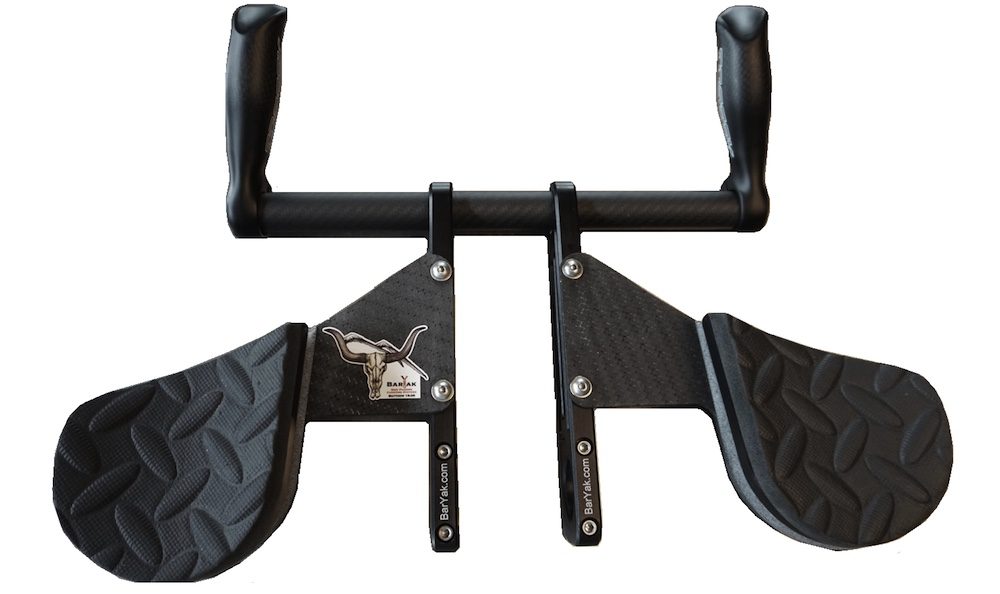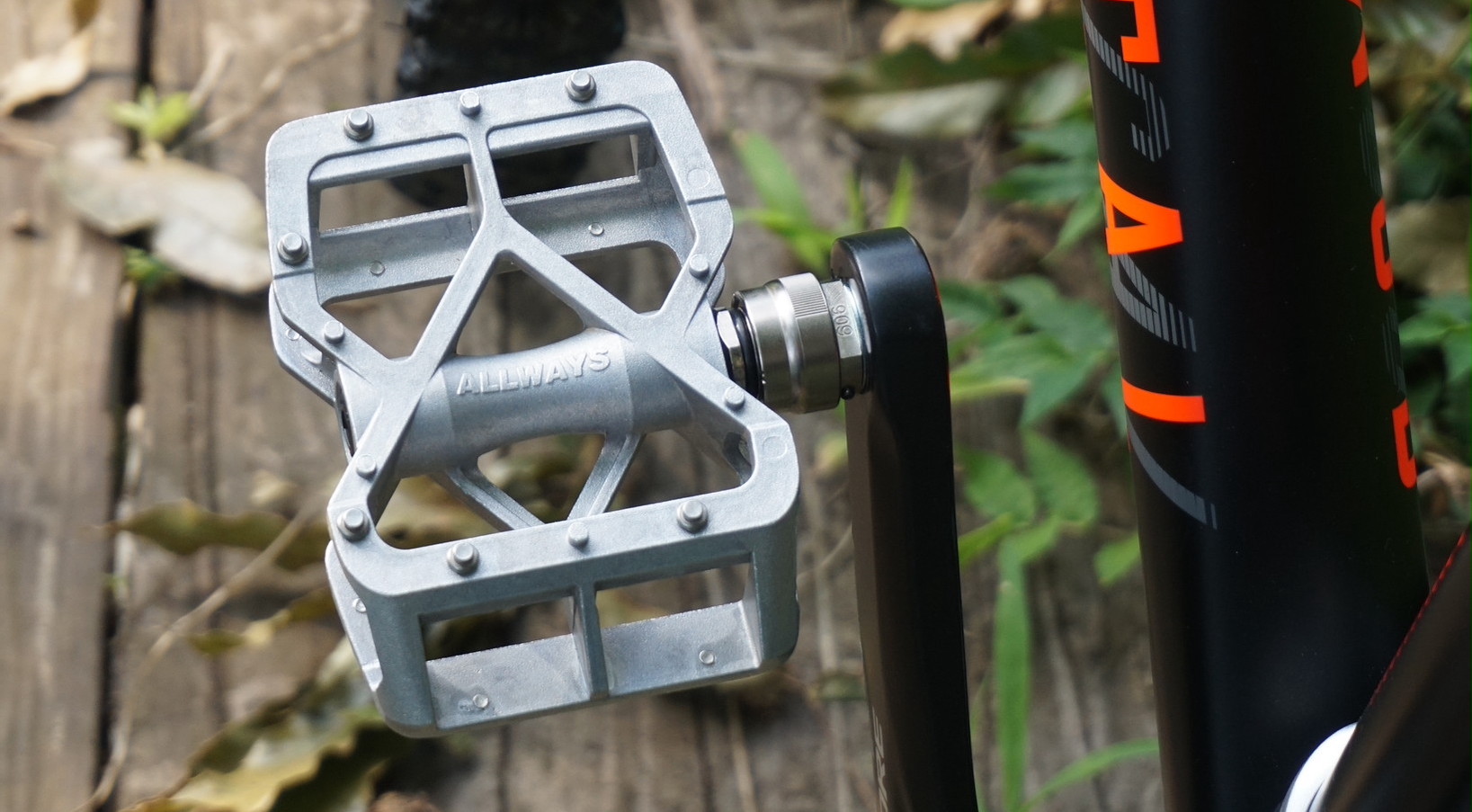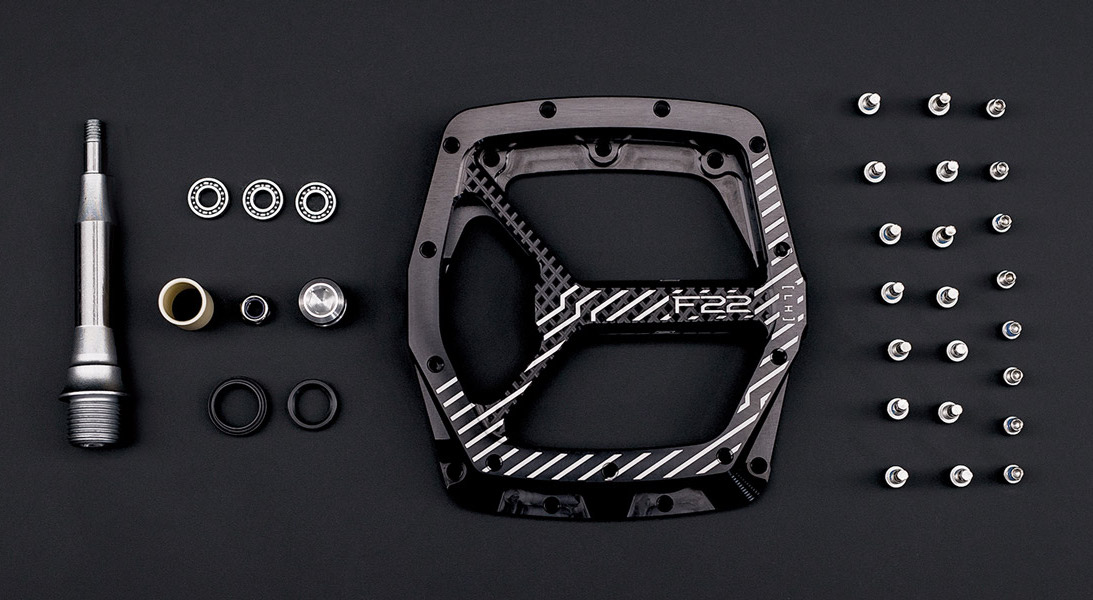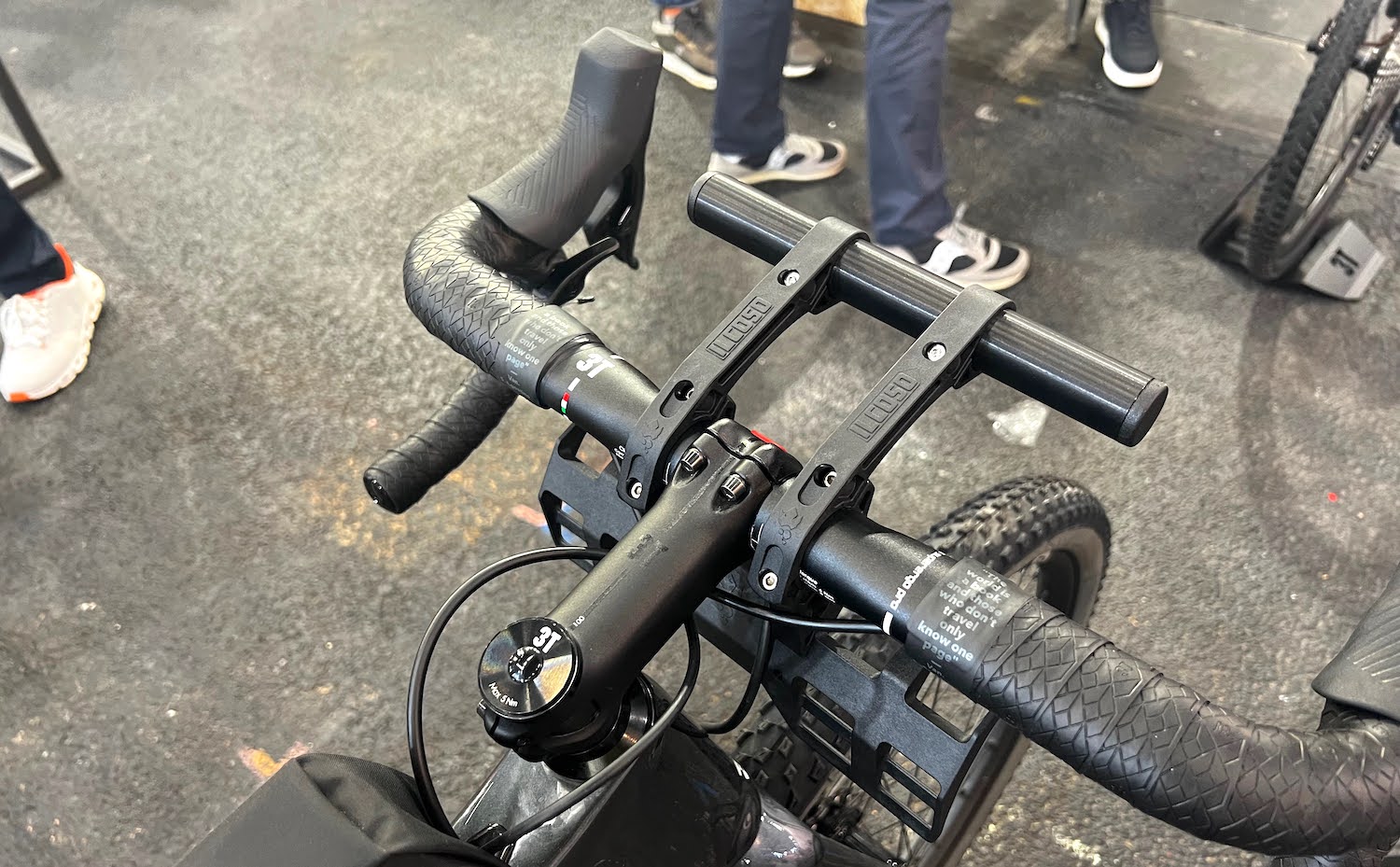Table of Contents
- Why Bikepacking Aero Bars Are Awesome
- Frame Design & Aero Bars
- Super Adjustable Aero Bars
- Fred Bar Steerer Mounting Kit
- Recommended Aero Bar Setup Height
- Aero Bar Shape and Construction Material
- Fold-Up Armrests
- Mini Aero Bars
- Other Aero Bar Designs
- Bikepacking Bags and Aero Bars
- Recommended Touring & Bikepacking Aero Bars
Aero bars have recently gained in popularity on bikepacking bikes. This is with thanks to the rise of ultra racing events like the Tour Divide where the top riders spend in excess of 18 hours per day on the bike.
But what you may not realise is that for these events, and adventure riding in general – bikepacking aero bars aren’t really about speed. Most aero bar users will agree the biggest advantage is the extra comfort.
Let’s get aero! (This article was originally published Dec 2018 but has been updated in Dec 2019)
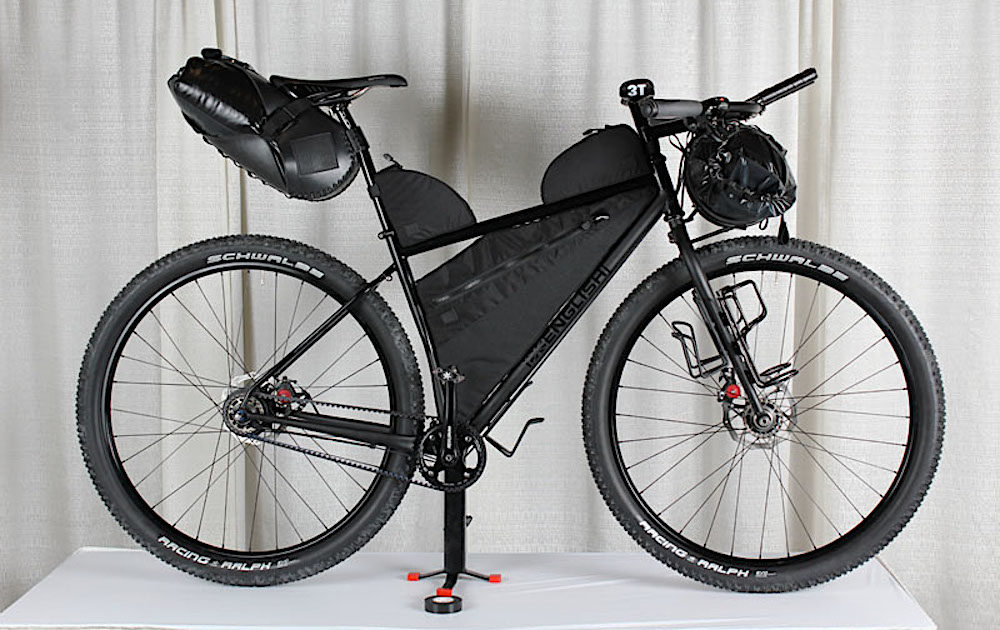
Why Bikepacking Aero Bars Are Awesome
Enjoy A Different Riding Position
Aero bars offer an entirely new riding position that’s most beneficial for long days in the saddle. With your elbows and humerus (arm bone) supporting the majority of your upper body weight, you’ll reduce strain on your arms, wrists and hands. In addition, aero bars will allow you to stretch out and use different back muscles.
Reduce Your Frontal Area
One of the biggest forces working against you is wind resistance. Aero bars will reduce your frontal area, resulting in faster riding speeds for the same amount of effort. This is particularly nice if you’re riding into headwinds but will also appeal to those attempting to cover longer daily distances.
More Mounting Options
If you’ve ever used – then removed – a set of aero bars after an ultra event, you’ll know how much you miss the accessory space of aero bars. For bikepacking setups, aero bars are a great place to mount bike computers, lights, phones and feed bags. Check out the Profile Design UCM ($11 on Amazon) to create more horizontal space.

Frame Design & Aero Bars
There are two frame geometries for bike travel:
– Frames that are designed for flat handlebars (with longer top tubes)
– Frames that are designed for drop handlebars (with shorter top tubes)
Given that riding in an aero position requires you to stretch further forward than normal, drop bar bikes with their shorter top tubes tend to be the best candidates for an aero bar setup. That said, there are a few products that will help you to achieve a comfortable riding position on flat bar bikes too, which I will be discussing below.
Super Adjustable Aero Bars
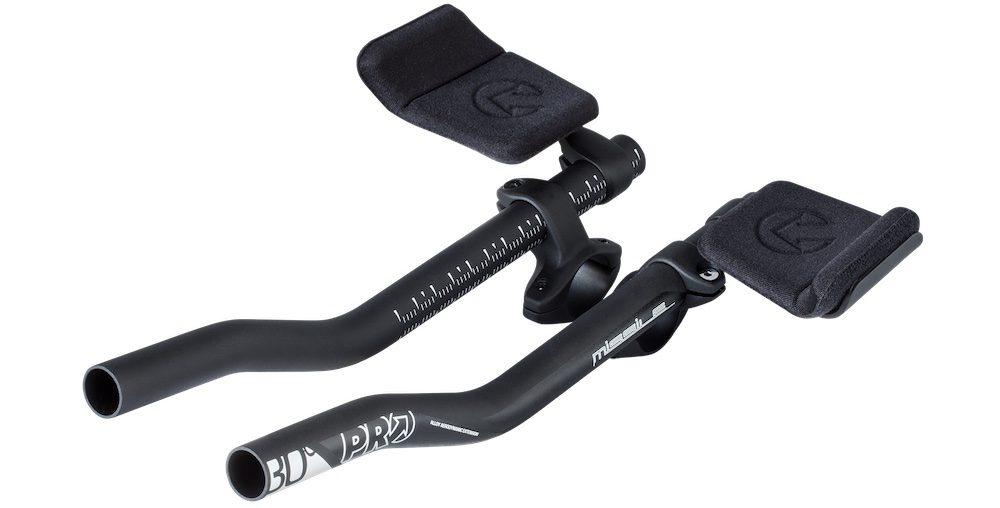
The majority of aero bars are designed to increase your speed on a road racing bike, more specifically in the triathlon discipline. The thing is that sizing between almost all road bikes of similar sizes is within millimetres, so aero bars don’t actually have to be very adjustable for the most part.
However, given that there is so much more variation between touring and bikepacking frames, plus the fact we’re looking to prioritise comfort over speed – you’ll want some aero bars with the most adjustability possible.
Here are the adjustments that are most useful for bike travel:
Armrest Adjustment. The vast majority of aero bar armrests are limited to a fixed position only (or a few millimetres of adjustment). In order to optimise your bike for comfort, you will likely need to bring your aero bars closer to your saddle using armrest adjustment – and the Pro Missile and Bontrager Race Lite are the best available in this regard.
Arm Pad Adjustment. Most arm pads can be rotated inward up to about 15-degrees, allowing you to dial in your position. Arm pads are often available in multiple thicknesses too. For example, Profile Design offer 16mm and 20mm, the latter is preferred for dirt road riding.
Extension Adjustment. The two bars that stick out from the front of aero bars are called the ‘extensions’ or ‘skis’. These are normally adjustable in terms of length, rotation and width.
Height Adjustment. Some aero bar models have compatible riser kits that allow 20-70mm / 1-3″ of height adjustment. Getting the appropriate height will not only allow you to maintain a good hip angle but will also decrease the overall reach, resulting in a more comfortable riding position.
Fred Bar Steerer Mounting Kit
A steerer mounting kit like the Fred Bar puts your aero bars directly above your stem, reducing your aero bar-to-saddle distance by approx. 40-80mm / 2-3″. This 133-gram steerer mounting kit was originally designed for flat handlebar bikes but is also a great option if you’re using aero bars without adjustable armrests (see picture above). A side benefit to the Fred Bar is that you can quickly add or remove your aero bars from your bike by simply removing your stem top cap.
Recommended Aero Bar Setup Height
On a touring or bikepacking bike, you’ll probably want to fit your aero bars a few centimetres higher than your saddle. The reason for this isn’t to optimise comfort, but rather to ensure your hip angle doesn’t change when switching between your aero bar and regular riding positions.
A radically different hip angle requires a different saddle position in relation to your crankset. That’s why you’ll find such steep seat tube angles on time trial bikes. With a lower and more forward riding position, you’ll also need a different saddle shape that’s wider and more padded on the nose.
For bike travel, you’ll be best off setting up your aero bars high to start with. You can then reduce the height until you’re low enough to be fast, but also comfortable enough to maintain your riding position for long periods of time. If you find yourself sliding forward to the nose of the saddle, you’ll either need to move your saddle further forward or increase the height of your aero bars. For moderately low riding positions (ie. aero bars a touch lower than your saddle), sliding your saddle forward on the rails will be enough to accommodate for the small changes to your hip angle.
You can raise your handlebars on your steerer if you have space, but the preferred option is to use aero bar riser kits. This will allow you to keep your existing handlebar height but also optimise your aero bars independently of everything else. If you prefer a slightly lower handlebar position but don’t want your aero bars to affect your hip rotation, an aero bar riser kit with up to 70mm / 3″ rise will be 100% necessary.
Do you still want a riding position that’s aerodynamically optimised? You should look into:
Dual-Position Seatposts
A really neat workaround for the hip-angle thing is to install a Redshift Switch seatpost. In just a second you can move your seat 50mm / 2.0″ forward, providing 3-4 degrees of effective seat tube angle change. Then when you’re done using your aero bars, you can shift your seat back to a more suitable position for riding upright.
Time Trial Saddles
Lower and more stretched-out riding positions put much more weight on the nose of your saddle. To be comfortable, you’ll need to test out a few time trial or triathlon saddles. If your position isn’t too low, a great all-around saddle for both a time trial and road position is the Selle SMP Pro.
Aero Bar Shape and Construction Material
Aero bars often come with two individual extensions (skis), but they can also be connected at the front. You’ll probably prefer individual extensions because that will allow you to adjust the width between armrests too. The extensions themselves are available in many different shapes to suit different wrist angles; the more angled versions tend to feel the most natural (but are slightly less aero). Aero bar extensions are constructed out of aluminium, carbon or titanium, but other than the 40-50 gram weight saving, you’ll find very little difference between them.
Fold-Up Armrests
There are two reasons to use fold-up armrests. The first is to gain more handlebar real estate on a narrow drop handlebar. By getting the armrests out of the way, you’re able to make use of, rather than lose the top of the handlebars. Fold-up armrests also offer a much better fit for bikepacking stem/feed bags (more on that below).
The downside to fold-up armrests? There is no forward or backward armrest movement – they are fixed. As a result, I recommend fitting fold-up armrests only once you’ve worked out your aero bar position first.
Mini Aero Bars
These small and lightweight aero bars (~200 grams) are designed for particularly short riding durations (eg. sprint distance triathlons). Most people who have used mini aero bars for bike adventures have found that the short extensions simply put too much force into their wrists, rendering them useless after only a few minutes.
That said, it’s possible mini aero bars could work for you if you put very little upper body weight on them; you’d have to have a particularly short and upright riding position for this to be the case, however.
Other Aero Bar Designs
BarYak aero bars have been designed specifically for bikepacking with flat handlebars in particular. Unlike other aero bars, the wide elbow pad width allows for feed bags to be used on either side of your stem. While these aero bars aren’t quite as short as a mini aero bar, you will still have to compromise a bit on length. Other advantages to using the BarYak system include being able to mount a Revelate Sweetroll handlebar pack at four locations (rather than two), extra space for accessories and the fact you can angle the bar-ends to your preferred wrist angle.
A little-known product that gives an aero bar-like position is the Jones Gnarwhal. This single bar-end is fitted out the front of a Jones Loop bar like a rhino horn (or narwhal tusk!). The Gnarwhal gets quite mixed reviews; a few users have found that simply running their arms along the ends of the Loop bar achieves a very similar body position (without the need for a Gnarwhal). If you do decide to give the Gnarwhal a try, make sure to install some thick foam under your bar tape to ensure maximum elbow comfort.
Bikepacking Bags and Aero Bars
Feed Bags (aka Stem Bags)
Aero bars typically share the same handlebar real-estate as stem bags. That doesn’t stop people mounting their stem bags wide, or directly from the aero bar extensions out front. Jonas Deichmann fitted his stem bags out to the side for his 97-day ride from Alaska to Argentina (see pic above).
Bikepacking Bags Designed For Aero Bars
Bikepacking handlebar packs have no problem mounting to a bike fitted with aero bars. There are two handlebar packs designed to fit directly to aero bars though: the Apidura Racing Handlebar Pack and the Restrap Race Aero Bar Bag. This bag mounts at four locations, keeping it stable and reducing the strain on your brake and gear cables. It also has integrated feed bags on either side to quickly stow additional bidons or snacks.
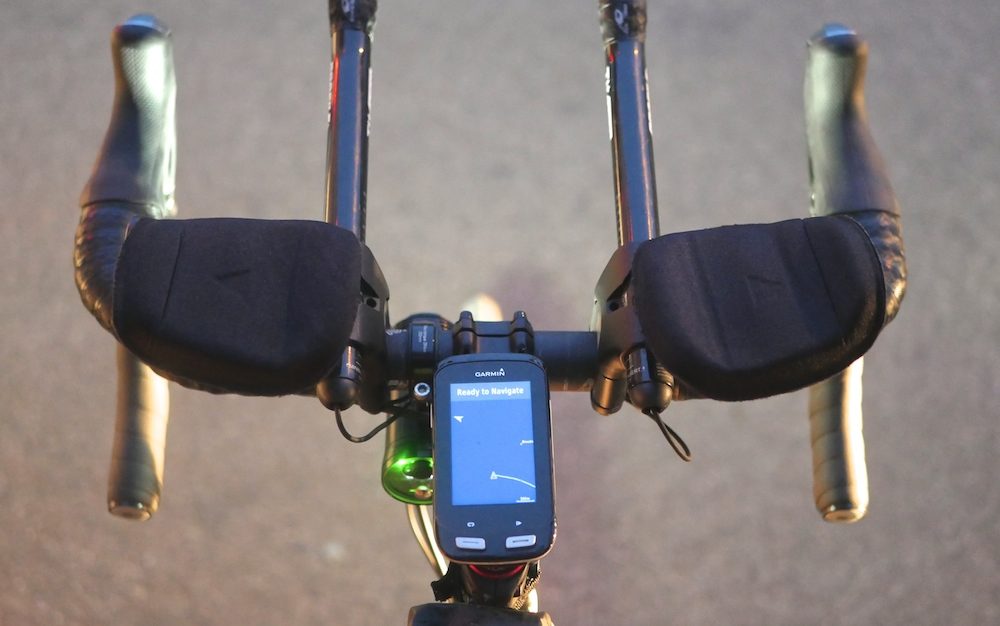
Handlebar Bags
It’s almost impossible to use aero bars in conjunction with a typical touring handlebar bag. The only way I’ve seen this work is if the handlebar bag is mounted very low on a t-bar, but this will depend entirely on your bike setup. For the vast majority of setups, touring handlebar bags are incompatible with aero bars.
Recommended Touring & Bikepacking Aero Bars
*If you want to buy any of these aero bars, doing it via the Amazon links gives CyclingAbout a small commission (no cost to you) which goes into creating more great resources for the bike travel community.
Bontrager Race Lite Aero Clip-On – 550 grams – US $126 on TrekBikes
The best-value aero bar for flat or drop bar bikes is the Bontrager Race Lite.
The Bontrager Race Lite aero bars are the cheapest here and allow for the forward and back movement of the armrest pads to achieve a comfortable ride position with both drop and flat bars. The only thing to note is that the extensions only come in one shape and there is no riser kit available.
Profile Design Sonic Ergo – 550 grams – 35A (US $150), 4525A (US $115), 50A (US $142), T5 (US $149)
The best aero bars for drop bar bikes are the Sonic Ergo (they will suit flat bar bikes with a Fred Bar).
The Sonic Ergo range is very adjustable! They come in four different extension bends, two different armrest pad options (16mm or 20mm for extra comfort), and up to 70mm of height adjustment with the riser kits ($26). The bar extensions are adjustable in length, width and rotation; the arm pad angle can be adjusted 15-degrees too. Unfortunatunately, the armrests can’t be moved closer to the rider, so these are best paired with a shorter drop bar frame.
If you’d like a bit of extra hand space on the top of your drops, you can also add the flip-up bracket kit (US $79 on Amazon).
Pro Missile AL Aerobar – 484 grams – US $179 on Amazon
The best aero bars for a flat-bar bike are the Pro Missile.
The Pro Missile aero bars are another variant with significant armrest adjustment – in fact, you can adjust the armrests far enough back to be comfortable on a flat bar frame without a Fred Bar Steerer Mounting Kit. There are three different extension shapes available and a very expensive riser kit too.
RedShift Switch Aero System – Carbon 564g and US $249 – Aluminium 640g and US $179
This system is best if you will be adding and removing your aero bars regularly.
If you’re planning on fitting and removing your aero bars regularly, you’ll want a set of RedShift Switch aero bars. These quick release bars take just a few seconds to install/remove and you can even have clamps on multiple bikes! There are two extension shapes available – L-bend (recommended) and a flatter and more aerodynamic S-bend. The only limitations of the Switch bars are the extra weight and lack of armrest adjustment. That said, these bars could be a great fit on many bikes in combination with a Fred Bar steerer mount.
BarYak Expedition – 484 grams – US $365
I talked about the BarYak above – with these fitted you’ll get feed bag space, accessory space and more mounting points for a Revelate Handlebar Harness. The main downside is the lack of length and adjustability of the armrests, so this could be a great upgrade once you’ve already found a position that works on your more adjustable aero bars.
VAP Butterfly 3 Aero Bars – €290 to €330
This unique product combines a stabilised bikepacking front bag (11 or 15 litres) with an aero bar kit. The extensions themselves are available in two different lengths but this kit is still best suited to a drop bar bike due to the limited armrest adjustability.
Aero Bars For Bike Travel. Yes Or No? Let Me Know Your Experience Below


